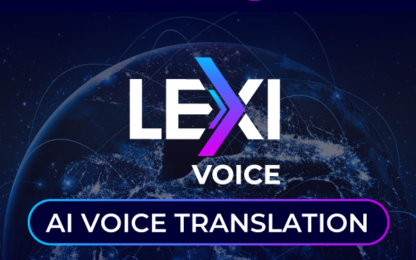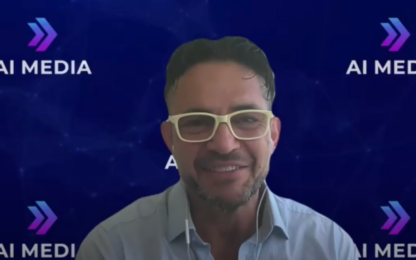
How Automated Captions Are Making Accessibility Possible for Indian Broadcasters
How Automated Captions Are Making Accessibility Possible for Indian Broadcasters
India is home to approximately 63 million people who are Deaf or hard of hearing, according to the World Health Organization.[1] To put that figure in perspective, that’s almost as many people as the entire population of the United Kingdom.
It’s for this reason that the Indian government has in recent years taken huge steps towards creating a more accessible society, with captions playing an important role. For the nation’s broadcasters, there’s an increasing need to meet accessibility compliance requirements since the passing of the Rights of Persons with Disabilities Act in 2016. But compliance is by no means the only reason for broadcasters to caption their content.
The Growing Need to Caption Indian TV
While providing accessibility to the Deaf and hard of hearing is an important prerogative that captions serve, they’re also proven to deliver a range of benefits to wider audiences. And these audiences often not only seek out captions when watching TV, but expect them.
For instance, recent research from several reputable sources reveals that:
- 80% of people are more likely to watch an entire video when captions are available.[2]
- 85% of Facebook videos are viewed with the sound off.[3]
- 80% of Netflix viewers use captions at least once per month.[4]
- 80% of TV viewers aged 18-25 say they use captions all or part of the time.[5]
The Benefits of Captioning TV Broadcasts
Across the globe, captions have become more widespread across various mediums, including TV, online streaming and virtual meeting platforms. And while they were traditionally provided to aid the Deaf and hard of hearing, more and more broadcasters, corporates, governments and others are recognizing that captions can also help:
Boost Engagement
Numerous studies prove that captions enhance comprehension and information retention, not only for those watching in their non-native language, but for people with high literacy levels too.[6] They can also increase video watch times. A Meta study reveals that captions increased the view time of Facebook video ads by 12%.[7]
Provide Flexibility
Viewers can engage with your content no matter where they are or what they’re doing – whether they’re on commute or working in a noisy (or quiet) environment. Research shows that 69% of people view video with sound off in public places, and 25% watch with sound off in private places.[8]
Expand Your Audience
Non-native speakers often rely on captions. In fact, Netflix research reveals that many of its viewers “use dubs and subtitles to learn new languages.”[9] Multilingual captions, meanwhile, can help you reach a wider, more global audience.
Captions Are Now More Affordable and Accurate Than Ever
A few years ago, human captions were the only practical option for Indian broadcasters. But while human captions provided impressive accuracy, they often exceeded production budgets.
Back then, automated captions simply weren’t a practical alternative to human captions, given they couldn’t reliably deliver the accuracy needed for live TV. However, in the last few years the technology behind automated captions has advanced exponentially. Today, they deliver accuracy approaching, if not meeting that of human captions, while costing far less.
For instance, Ai-Media’s Lexi automated captioning solution achieves up to 98% accuracy and is trusted by some of the world’s leading broadcasters to caption both live TV broadcasts and over-the-top (OTT) content. Compare this to the 99.5% accuracy of our Premium human captioning service, and it’s easy to see how automated captioning solutions are fast catching up.
The agreeable price-point of automated captions are a boon to Indian broadcasters who may have previously balked at captioning their content due to the costs involved. And with their ability to deliver accuracy rivalling that of human captions, automated captions have become a practical if not ideal solution.
How Automated Captions Solve the Problem of Translating TV Broadcasts
India is home to more than 1,500 languages, with 30 spoken by more than a million people. This linguistic diversity has long posed as a barrier to broadcasters reaching larger audiences across the country, but with automated captioning solutions they now have the means to translate their content in real-time.
For instance, combining Lexi with Ai-Media’s iCap Translate solution allows broadcasters to add live multilingual captions to their content, helping them break down language barriers to reach far wider audiences.
Simplifying Production Workflows With Next-Gen Captioning Infrastructure
Indians are consuming OTT content at a phenomenal rate. Research reveals they spend an average of almost 11 hours per week watching online video, compared to the global average of just under 8 hours.[10]
As Indian broadcasters look for more cost and time-efficient ways to service insatiable viewer appetites, many are transitioning to IP video production environments. And the good news is that those who’ve already made the transition can save time and money with IP captioning technology.
For instance, broadcasters can combine Ai-Media’s Lexi with our iCap Alta IP encoder to enhance production workflows with an end-to-end, fully virtualized IP solution. This powerful combination is not only perfect for broadcasters, but also for any organization looking to efficiently live stream an event, conference or webcast.
Automated Captions Make Accessibility Easy for Indian Broadcasters
With automated captions capable of delivering high accuracy, low latency captions, satisfying growing viewer demand for captions now seems far more realistic for Indian broadcasters. And the ability to translate content in real-time with a solution that won’t exceed production budgets is set to be a gamechanger for broadcasters looking to expand their audiences across the country and overseas in regions where captions are mandated.
Visit Ai-Media at BES Expo in New Delhi to Learn More About Our Solutions
Join the Ai-Media team at BES Expo from 16-18 February to learn all about our range of captioning solutions. We’ll showcase our full range of solutions designed for broadcasters, including Lexi, iCap Translate, and our range of IP and SDI captioning encoders.
You can register for BES Expo here and you can even book a meeting with us at the event to discuss your captioning needs.
[1] Ministry of Health & Family Welfare, Government of India
[3] Multiple publishers cited by DigiDay


